Everything you need to know about dream catchers

In many cultures, it is believed that a person is defenseless while sleeping. During this period, he may be attacked by spirits. To prevent this from happening, people hang various amulets in the bedroom. The most popular of these is the dream catcher.
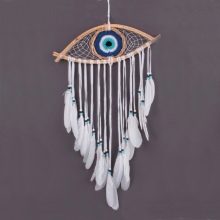

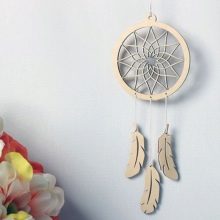
What is it and why are they needed?
An unusual amulet most often has the shape of a circle. But there are also triangular or spiral amulets. Traditionally, the base of a dream catcher is made from flexible willow branches. The basis of the amulet is a spider web woven from reindeer veins or threads.
A dream catcher is designed to ward off bad dreams and evil spirits. It is believed that they become entangled in the web of the amulet and cannot reach its owner.
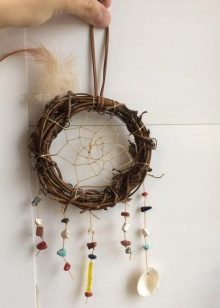
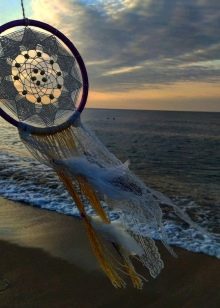

The finished product is decorated with feathers, colored beads and shells. The choice of feathers has always been of particular importance. Most often, owl, eagle or crow specimens were used to create catchers.
Now such amulets are bought not only by people who believe that the catcher really works. Often, souvenirs are brought from travel and used to decorate their bedroom or recreation area.
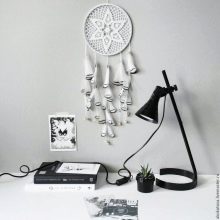
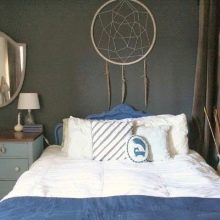

History of origin
Most people are familiar with only one type of dream catcher. Therefore, they believe that this amulet was used only by representatives of the ancient Indian tribes. But in fact, similar amulets were found among other peoples.
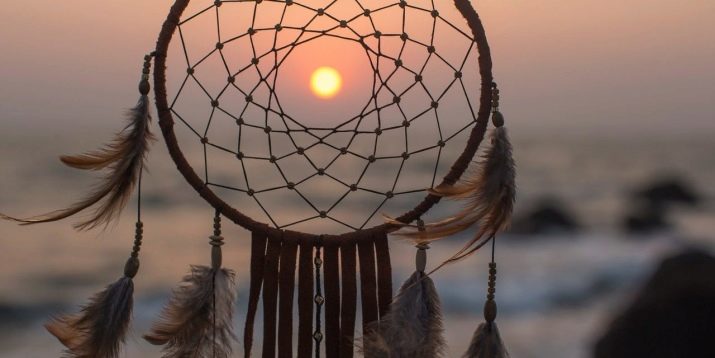
There are several legends about the origin of the dream catchers.
- The first story is related to the Lakota tribe. According to legend, one of their elders saw a wise spirit in the guise of a Spider during meditation. He told him about the circle of life that each person goes through.He called his symbol a circle woven from willow branches. The web, located in its center, symbolized a large number of roads that a person encounters. The spider ordered the elder to use the wicker amulet for protection. He was supposed to protect the soul of a person from evil spirits and bad thoughts. It was believed that they get stuck in the weaving of cobwebs and burn out in the morning with the first rays of the sun.
- Another legend is related to the goddess Spider, who, according to legend, rules the universe. The Indians believed that she was taking care of them. In the morning, she weaves a web and catches the sun with it so that it warms the world. So that the Indians were always under the protection of the goddess, she commanded them to weave small cobwebs enclosed in a circle of thin twigs of willow. Such amulets were supposed to return the sun to the house and protect its inhabitants from everything bad.
In Europe, interest in these amulets has arisen relatively recently. This happened in the second half of the last century, when various ethnic cultures also became popular. Since then, it has not subsided. Therefore, dream catchers are happy to buy many exotic lovers.

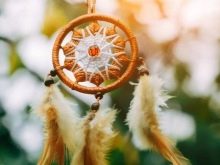
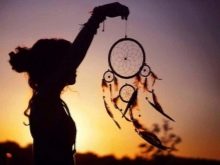
Views
There are several main types of such amulets.
The initial
The earliest dream catchers belong to this category. Their progenitors were ordinary threads with knots, which were worn on the wrist or throat. Over time, these threads began to be attached to a round base. Separate details were intertwined, creating an impromptu web. Such amulets were not decorated with feathers.
The initial dream catchers are as simple as possible. Therefore, many people now use them to decorate bedrooms.
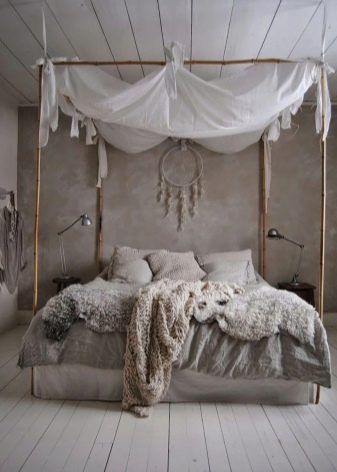
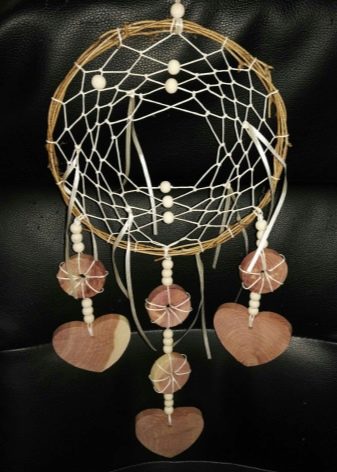
Indian
Dreamcatchers created by Indians fall into three categories.
- Ojibwe... Representatives of this tribe came up with the first full-fledged dream catchers. Initially, animal veins were used to create them. The weaving turned out to be realistic and looked like a real spider web. In its very center, there was always a small "window". Its purpose was simple: good dreams were to enter through this window. Of particular importance is the number of knots based on the hoop. Small catchers have 8 points. They symbolize 8 spider legs. Large catchers have 12 knots. Only one feather is usually used to decorate an amulet. It is attached to the structure with a thread.
- Cree... The catchers created by the representatives of this tribe look the same as the previous ones. The spider web decorating the base is very realistic. The only significant difference is that there is no window in its center. Such catchers do not decorate with feathers or other trifles.
- Navajo... It is these catchers who have gained the most popularity throughout the world. They are highly regarded for their attractiveness and ease of weaving. Everyone can create such a charm with their own hands. Decorate ready-made accessories with a large number of feathers and beads. There are specimens decorated with autumn leaves or figurines of wolves and birds. In general, as is clear from the description, these types of amulets differ little from each other.

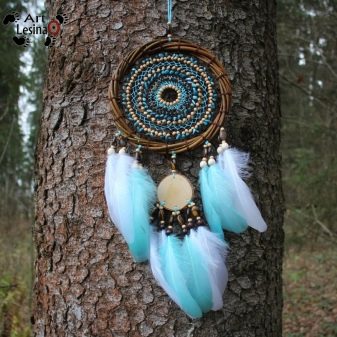
Asian
Dreamcatchers used in Asian countries are almost always complemented with red details. In addition, such amulets adorn the signs of the zodiac or figurines of animals. They can be woven into the base of the web or attached to a willow ring with a thread.
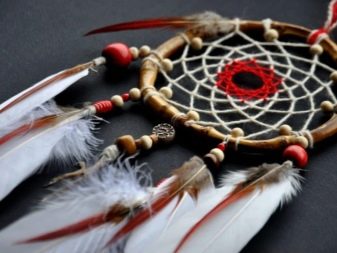
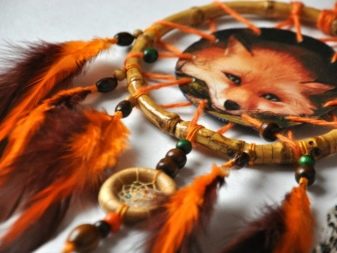
Siberian
Such catchers were used by Siberian shamans. The amulets are known as Kytgyem. Translated into Russian, this word means "trap". The peculiarity of such amulets is that they are woven from 18 threads. Fibers pick up red and black. The pattern created during the weaving process symbolizes the movement of the midnight sun, which shines in the land of dreams, across the firmament.
A small bait is attached to the center of the Siberian amulet. It could be a tuft of wool or a piece of cloth soaked in blood. Figures of magical animals or stones are often attached to the base of the catcher. They can be located on any part of the amulet.Such amulets are not used to protect against bad visions and evil spirits. On the contrary, they absorb other people's energy and dreams. At night, all this information is passed on to the shaman.
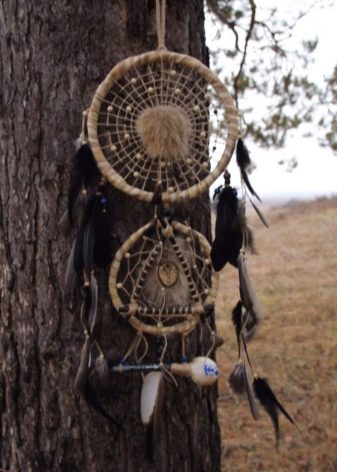
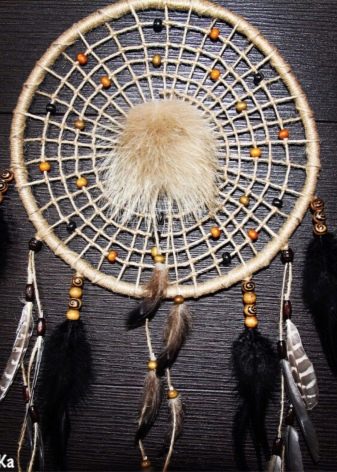
Slavic
The Slavs also made a kind of dream catchers. They were made in the form of small pupae. They made figurines from fabric and colored threads. Pupae have never had a face painted. The figurines were attached to branches and hung over the bed. It was believed that such amulets help ward off nightmares and attract good dreams. Most often they were hung over baby cots.
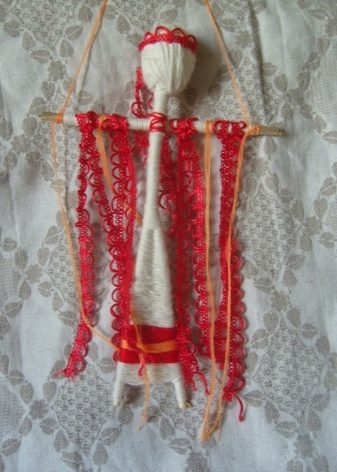
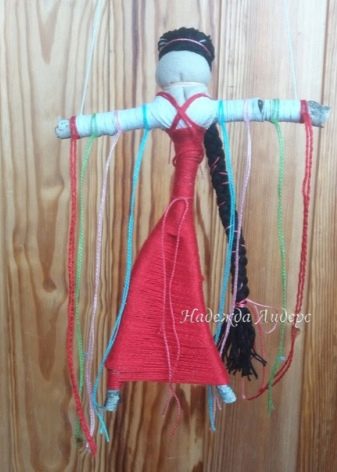
The meaning of colors
When choosing or creating a catcher, it is very important to pay attention to the color of the threads, feathers and other details.
- White... This color symbolizes purity and innocence. It is believed that the amulet, made in white tones, cleanses a person of negative energy during sleep.
- Green... This color is a symbol of love of life and good health. Green dream catchers are recommended to be chosen by active people who constantly set new goals for themselves.
- Red... Red amulets are often used to decorate bedrooms. All of its shades are associated in humans with passion and fiery energy. It is believed that scarlet catchers strengthen the will of a person and give him inspiration.
- Pink... This color is associated with tenderness and romance. The use of such light catchers will help the inhabitants of the house find peace and improve relationships with loved ones.
- Blue... This color symbolizes lightness and harmony. Deep shades of blue help to strengthen a person's intuition, light blue - to relax and start enjoying life.
- Yellow... Bright sunny color is a symbol of love of life and freedom. The yellow amulet endows a person with positive emotions and develops his spirituality.
- Black... For many, this color is associated with mourning. But black catchers symbolize peace and fearlessness. The use of such a talisman helps a person find spiritual harmony.

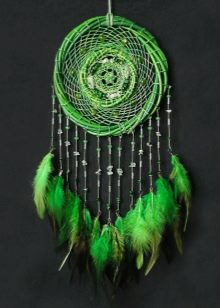

To decorate amulets, details of 2-3 colors are usually used. Knowing what the different shades mean, you can make a universal amulet that will ideally suit its owner.
When creating a Siberian dream catcher, only two primary colors are used. Each of them has a special meaning. Therefore, it is not worth supplementing the amulet with some of your own details.
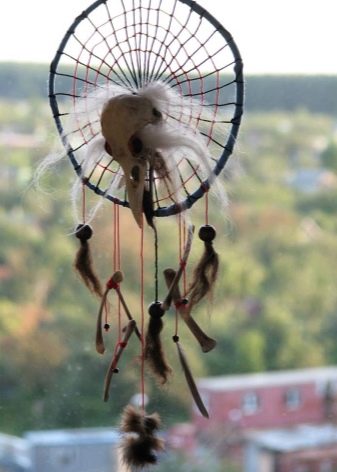
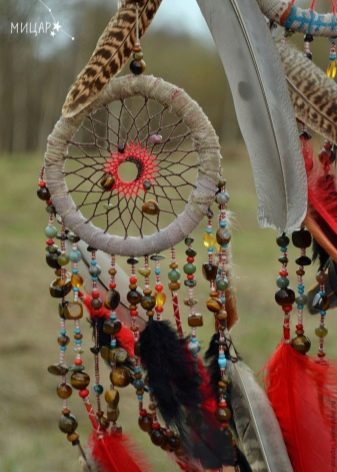
Where to locate?
It is customary to hang a dreamcatcher at the head of the bed. It should be above the person's head... In this case, the amulet will fulfill its function and protect its owner from negativity. If it is impossible to hang a catcher above the bed, it can be placed nearby.
The amulet, which is used as a decoration, can be hung anywhere in the room. This detail will look good next to a window or on a bedroom door. In the living room, the dream catcher can be positioned above the sofa. It is not customary to hang such amulets in other rooms.

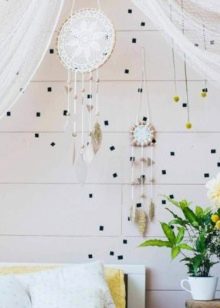

Examples in the interior
You can make sure that the dreamcatcher fits perfectly into the interior of a modern apartment by looking at examples of decorated rooms.
Creative zone
The colored Indian amulet will look great in the area for recreation or creativity. It will add bright colors to the interior and will serve as an unusual source of inspiration for creating new works.
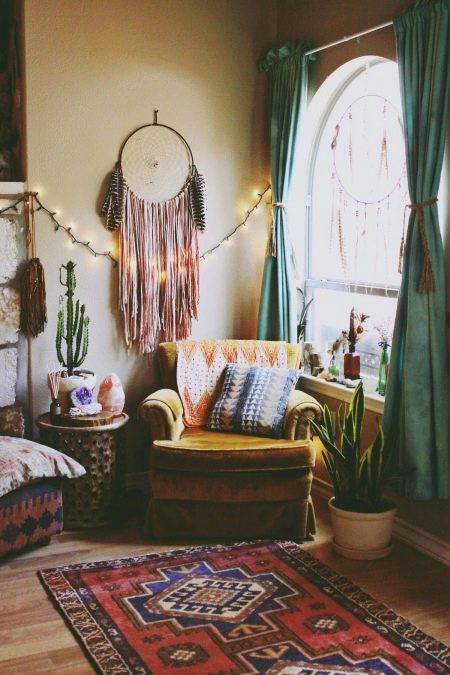
Workplace
You can decorate your home workplace with an unusual dream catcher with bright feathers and original weaving. He will bring the selected space to life. You can place such a catcher above the work table.
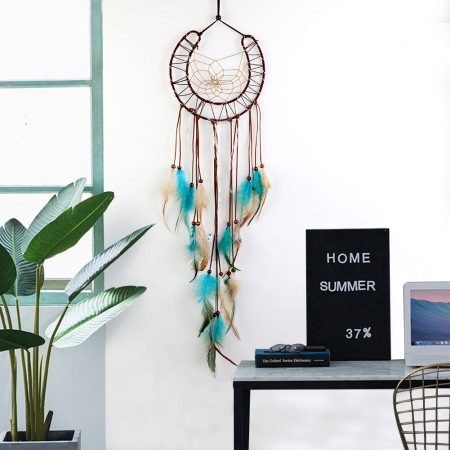
Sleeping area
It would be appropriate to hang a light amulet in the bedroom. The combination of several catchers of different sizes and shapes looks interesting. This decor will fit well in a modern bedroom with a minimum of furniture.

The dream catcher is a charm with a rich history. Therefore, it is worth paying attention to such decoration not only for those who believe in magic, but also for lovers of various ethnic amulets and decor items.
